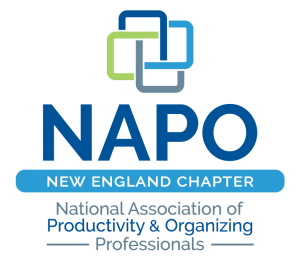Stagnant means lifeless, inactive. Do you have stagnant things in your home? Do you have things that have outlived their usefulness? I think we all do. The longer we live in our spaces the more comfortable we get with our surroundings. It becomes easy to ignore papers that don’t require action, gadgets we tried once, and random things that have become part of our decor. After a while we don’t see these things any longer. They morph into the background of our homes.
After attending a conference session on Feng Shui I decided to get rid of stagnant things in my home. I’ll list 10 stagnant things I removed my home to help you get motivated to do the same.
- An old cardboard display that I had used for a few business presentation more than 5 years ago was recycled with my weekly town recycle.
- An open, partially used bottle of carbon, that is used in fish tank filters, was given away by listing it on FreeCycle.
- A bag of craft supplies that I hadn’t used in more than 5 years was passed along to other creative people I know.
- Unused food in my pantry was donated to my local food bank and Operation Shoebox.
- Gardening gloves that I wore only once because they turned my hands orange were tossed.
- Our ice maker broke 2 years ago. So I finally donated (to Savers) the scoop we had used for that purpose, but hadn’t used since.
- Old makeup was tossed. I haven’t worn make up in years.
- A soup ladle that came with a soup delivery when I was sick, but never used, was donated to Savers.
- Two spare, never been used, hand-me-down light timers were donated to Habitat for Humanities ReStore.
- An open container of Armor All wipes that were given to me a year ago, finally got used up.
These 10 stagnant things may not seem like much, but they have a way of piling up and cluttering our homes. I encourage you to take a good look at your home and reevaluate what’s in your space. If you find stagnant things, get rid of them. You’ll improve the energy of your home (Feng Shui) which will have a positive impact on you.
©June 2021 Janine Cavanaugh, Certified Professional Organizer® All Rights Reserved
 Editing our possessions annually is a healthy organizing practice. This helps us prevent clutter build up. When editing our belongings there is one question we can ask ourselves to help us decide weather to keep or not keep something. That question is, “Would I buy it again if I didn’t already own it?”. If the answer is ‘no’ then let the item go.
Editing our possessions annually is a healthy organizing practice. This helps us prevent clutter build up. When editing our belongings there is one question we can ask ourselves to help us decide weather to keep or not keep something. That question is, “Would I buy it again if I didn’t already own it?”. If the answer is ‘no’ then let the item go.









Follow Me